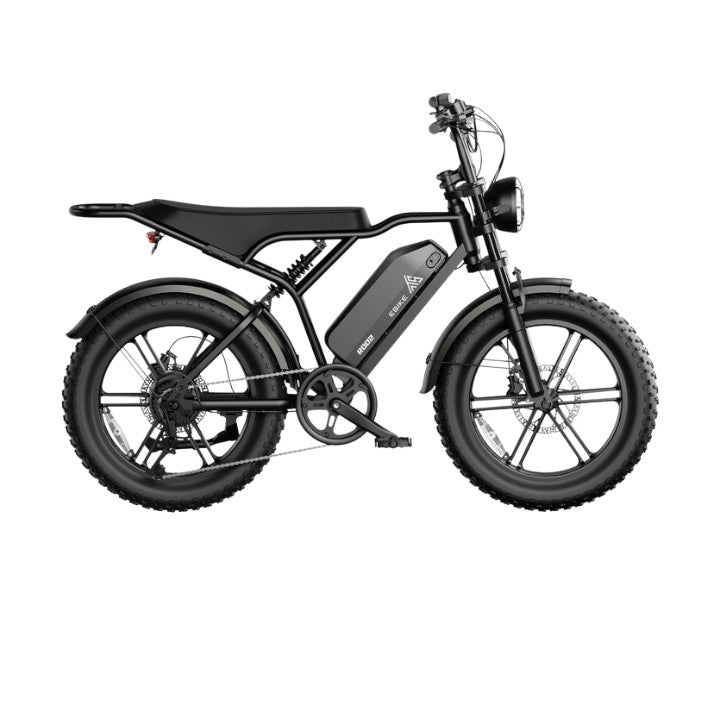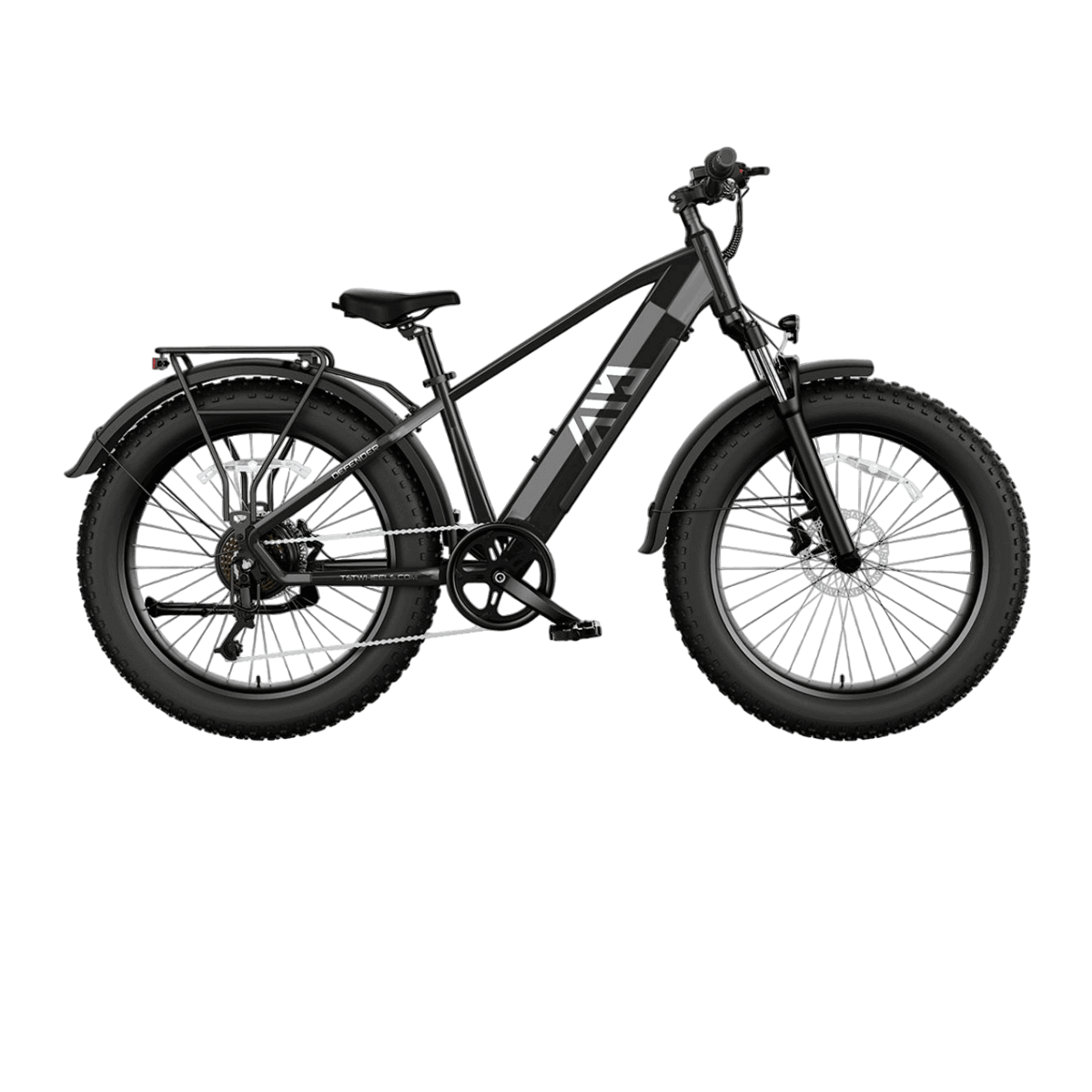A Class 3 electric bicycle is a pedal-assist e bike that provides motor assistance only when the rider pedals, with a maximum assisted speed of 28 mph and motor power limited to 750 watts. Popular in 2025, Class 3 e bikes blend speed, efficiency, and compliance with evolving regulations, making them ideal for commuters and riders seeking faster travel while meeting legal requirements.
How Is a Class 3 Electric Bicycle Defined and What Are Its Key Features?
Class 3 electric bicycles are defined by several key characteristics:
- Pedal-assist only; throttle use is prohibited.
- Motor assistance cuts off at 28 mph.
- Motor power capped at 750 watts (1 horsepower).
- Equipped with a speedometer.
- Riders usually must be at least 16 years old and wear helmets.
- Often restricted from bike paths and multi-use trails due to higher speeds.
These features distinguish Class 3 from Class 1 (20 mph pedal-assist) and Class 2 (throttle up to 20 mph) e bikes.
Which Class 3 Electric Bicycle Models Are Leading in 2025?
Here is a comparison of popular Class 3 electric bicycle models known for performance and reliability:
Class 3 Electric Bicycle Models Comparison Chart
| Model | Motor Power | Battery (Wh) | Range (miles) | Top Speed (mph) | Weight (lbs) | Best Use |
|---|---|---|---|---|---|---|
| HOVSCO HovAlpha | 750W (1300W peak) | 960 | Up to 80 | 28 | 70 | All-terrain, commuting |
| Specialized Turbo Vado | 350-750W | 500-700 | 40-60 | 28 | 48-55 | Urban commuting |
| Juiced RipCurrent S | 750W | 960 | 45-70 | 28 | 70 | Off-road and city |
| Rad Power RadCity 5 Plus | 750W | 672 | 40-50 | 28 | 77.5 | City and suburban |
| Cannondale Quick Neo SL | 250-500W | 320-500 | 40-50 | 28 | 33-38 | Lightweight commuting |
How Do Class 3 Electric Bicycles Differ From Other E Bike Classes?
Class 3 e bikes provide higher speeds and more power than Class 1 and Class 2 models. Unlike Class 2 e bikes, Class 3 models do not allow throttle operation beyond 3.7 mph and require pedal-assist only up to 28 mph. Class 1 e bikes are limited to 20 mph pedal-assist. Class 3 e bikes often require helmets and may be restricted from certain bike paths due to their speed.
Why Are Class 3 Electric Bicycles Popular for Commuting and Recreation?
Class 3 electric bicycles offer a perfect blend of speed and efficiency, allowing riders to cover longer distances quickly while maintaining legal compliance. Their pedal-assist system provides natural riding feel and exercise benefits, while the 28 mph assistance enables keeping pace with traffic on roads. This makes Class 3 e bikes ideal for urban commuters, fitness enthusiasts, and recreational riders seeking faster, more versatile rides.
What Are the Legal Requirements and Restrictions for Class 3 Electric Bicycles?
In many jurisdictions, including California, Class 3 electric bicycles must:
- Have a motor not exceeding 750 watts.
- Provide pedal-assist only, with no throttle beyond 3.7 mph.
- Include a speedometer.
- Limit motor assistance to 28 mph.
- Require riders to be at least 16 years old.
- Mandate helmet use for all riders.
- Often restrict access to bike paths and multi-use trails.
Laws vary by state and locality, so riders should verify local regulations before use.
How Does Motor Power and Battery Capacity Affect Class 3 Electric Bicycle Performance?
Motor power capped at 750 watts ensures legal compliance while providing sufficient torque for hills and acceleration. Battery capacity, often ranging from 320Wh to 960Wh, determines range, with larger batteries enabling rides up to 80 miles. Efficient power management balances speed and endurance, making Class 3 e bikes versatile for various terrains and commuting distances.
What Safety Features Are Common in Class 3 Electric Bicycles?
Class 3 e bikes typically include:
- Speedometers to monitor assisted speed.
- Hydraulic or mechanical disc brakes for reliable stopping power.
- Integrated lights for visibility.
- Sturdy frames designed for higher speeds.
- Sometimes suspension systems for comfort on rough roads.
These features enhance rider safety and control at higher speeds.
Buying Tips
When purchasing a Class 3 electric bicycle, prioritize reputable brands like TST EBike that offer quality control and consumer feedback-driven designs. Consider motor power (750W max), battery capacity for your typical range needs, and safety features like brakes and lights. Choose between 26-inch models for rough terrains like snow and sand or 27-inch models for daily commuting and mountain biking. Test ride to ensure comfort and compliance with local laws.
TST EBike Expert Views
“At TST EBike, we recognize the growing demand for Class 3 electric bicycles that combine speed, safety, and reliability. Our models are designed to meet diverse rider needs, from rugged terrains to urban commutes, delivering high performance while adhering to evolving regulations. We are committed to providing affordable, quality e bikes that empower riders to explore with confidence.”
FAQ
What is the maximum speed of a Class 3 electric bicycle?
Class 3 e bikes provide pedal-assist up to 28 mph, faster than Class 1 and 2 models.
Are throttles allowed on Class 3 electric bicycles?
No, Class 3 e bikes are pedal-assist only with throttles generally prohibited beyond 3.7 mph.
Do I need a helmet to ride a Class 3 electric bicycle?
Yes, helmet use is mandatory for all riders on Class 3 e bikes in most jurisdictions.
Can Class 3 electric bicycles be used on bike paths?
Often, Class 3 e bikes are restricted from bike paths and multi-use trails due to their higher speeds; check local regulations.
Why choose TST EBike for a Class 3 electric bicycle?
TST EBike offers high-quality, cost-effective Class 3 e bikes with excellent range and safety features, backed by strong consumer feedback and quality control.
What is a class 3 electric bicycle?
A Class 3 electric bicycle is a pedal-assist e-bike that provides motor assistance only when pedaling, with no throttle allowed, a top assist speed capped at 28 mph, and motor power limited to 750 watts. It includes a speedometer and often requires riders to be 16 or older with helmets. Ideal for faster urban commuting.
What is the outlook for the bicycle industry in 2025?
The bicycle industry in 2025 sees strong growth driven by e-bike popularity, urbanization, and environmental awareness. Advances in battery technology, motor efficiency, and government incentives boost adoption. Demand for versatile, commuter-friendly models like Class 3 e-bikes continues to rise as sustainable transport solutions gain favor.
Why are ebikes so popular now?
E-bikes are popular due to their ability to reduce commuting effort, extend range, and offer eco-friendly alternatives to cars. They combine speed and convenience with health benefits, appealing to commuters, older riders, and adventure seekers. Incentives and improved tech make them accessible and practical in 2025.
What is a class 4 ebike?
Class 4 e-bikes are not officially classified in many regions like California but generally refer to high-power or speed e-bikes exceeding 750W or 28 mph. These are often regulated like mopeds or motorcycles, requiring registration and licensing due to their increased speed and power.
What Defines A Class 3 Ebike?
Class 3 e-bikes feature pedal-assist only, no throttle, assistance up to 28 mph, and motor power capped at 750 watts. They include a speedometer and require rider age of at least 16 with helmet use. These bikes are optimized for fast commuting and differ from Class 1 and 2 by higher speed limits and no throttle allowance.
What Is A Class 2 E-Bike?
Class 2 e-bikes provide motor assistance via a throttle, allowing motor-only operation up to 20 mph, plus pedal assist. They have motor power capped at 750 watts and offer easy acceleration without pedaling, making them suitable for casual riders and short-range commutes.
How Are Class 3 E-Bike Ratings Determined?
Class 3 e-bike ratings depend on motor power (max 750 watts), pedal-assist-only operation, maximum assistance speed of 28 mph, and mandatory inclusion of a speedometer. Compliance with safety regulations, rider age limits, and local laws also factor into classification.
Which Electric Bikes Should You Avoid?
Avoid e-bikes with poor build quality, unknown brands, weak batteries, questionable warranties, and insufficient motor power. Models lacking reliable brakes, poor customer support, or failing safety certifications risk safety and durability issues. Look for trusted brands like TST EBike for dependable performance.
What Is The Lightest Class 3 E-Bike Available?
Among light Class 3 e-bikes, the Cannondale Quick Neo SL weighs between 33-38 lbs, featuring a lighter frame and 250-500W motor with pedal assist up to 28 mph. It suits riders seeking fast but lightweight commuting options.
What Are The Best Canadian E-Bikes?
Top Canadian e-bikes in 2025 emphasize durability, cold-weather performance, and compliance with local laws. Brands with reliable motors, long battery range, and robust frames like TST EBike are popular. Look for models suited for diverse terrain and Canadian climate conditions.
How To Choose The Best E-Bike For Camping?
Select an e-bike for camping with strong motor power (500W+), fat or all-terrain tires, long-range batteries, and durable suspension. Consider cargo capacity for gear and water resistance. Full-suspension Class 3 e-bikes provide comfort and versatility for off-road trails during camping trips.
What Are The Features Of A Class 3 Full Suspension Ebike?
Class 3 full suspension e-bikes combine pedal-assist motors up to 750W with front and rear suspension systems for smooth handling on rough terrain. They include speedometers, heavier-duty frames, and powerful brakes for safety at speeds up to 28 mph, ideal for off-road and commuting performance.





Leave a comment
All comments are moderated before being published.
This site is protected by hCaptcha and the hCaptcha Privacy Policy and Terms of Service apply.